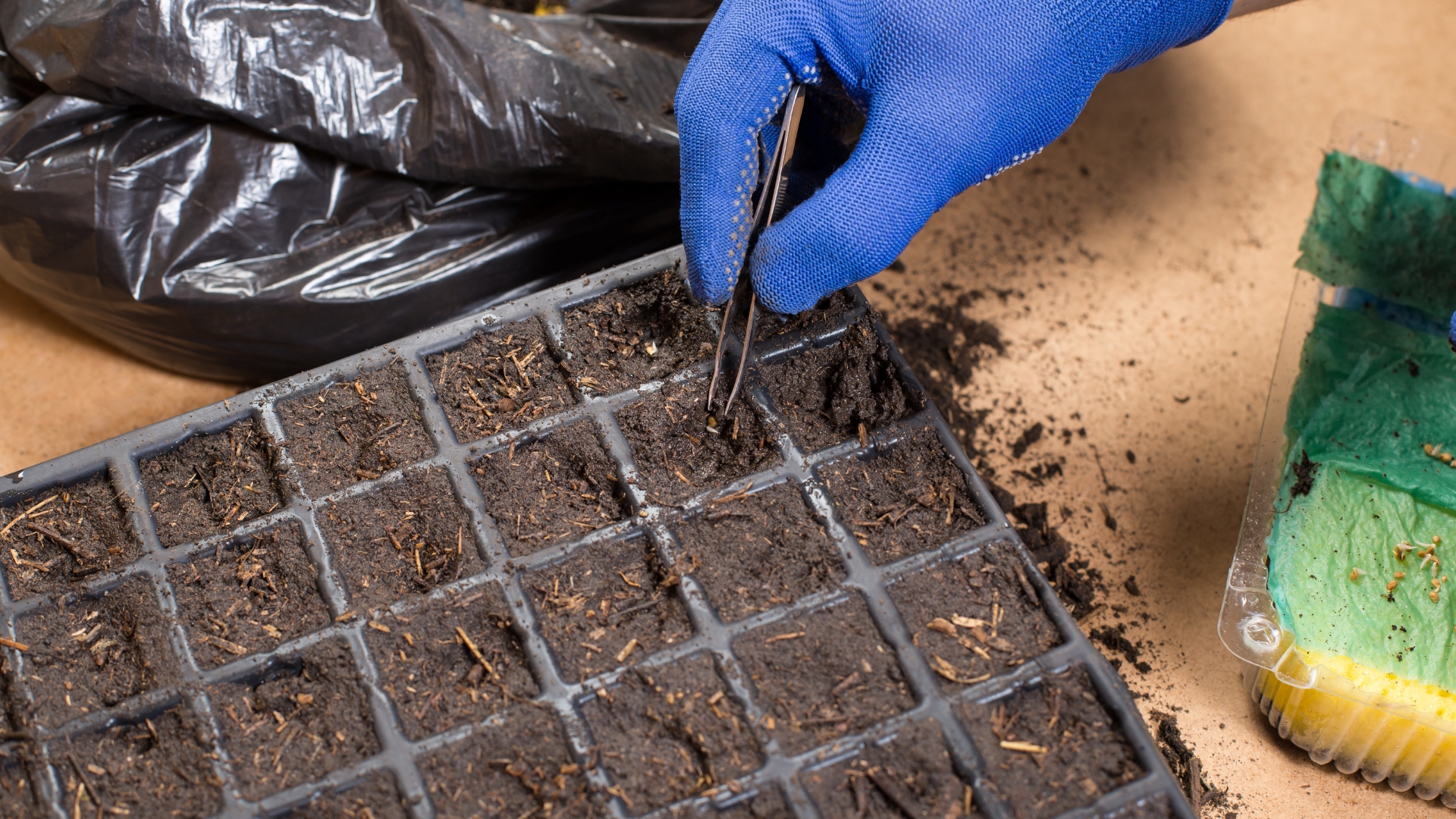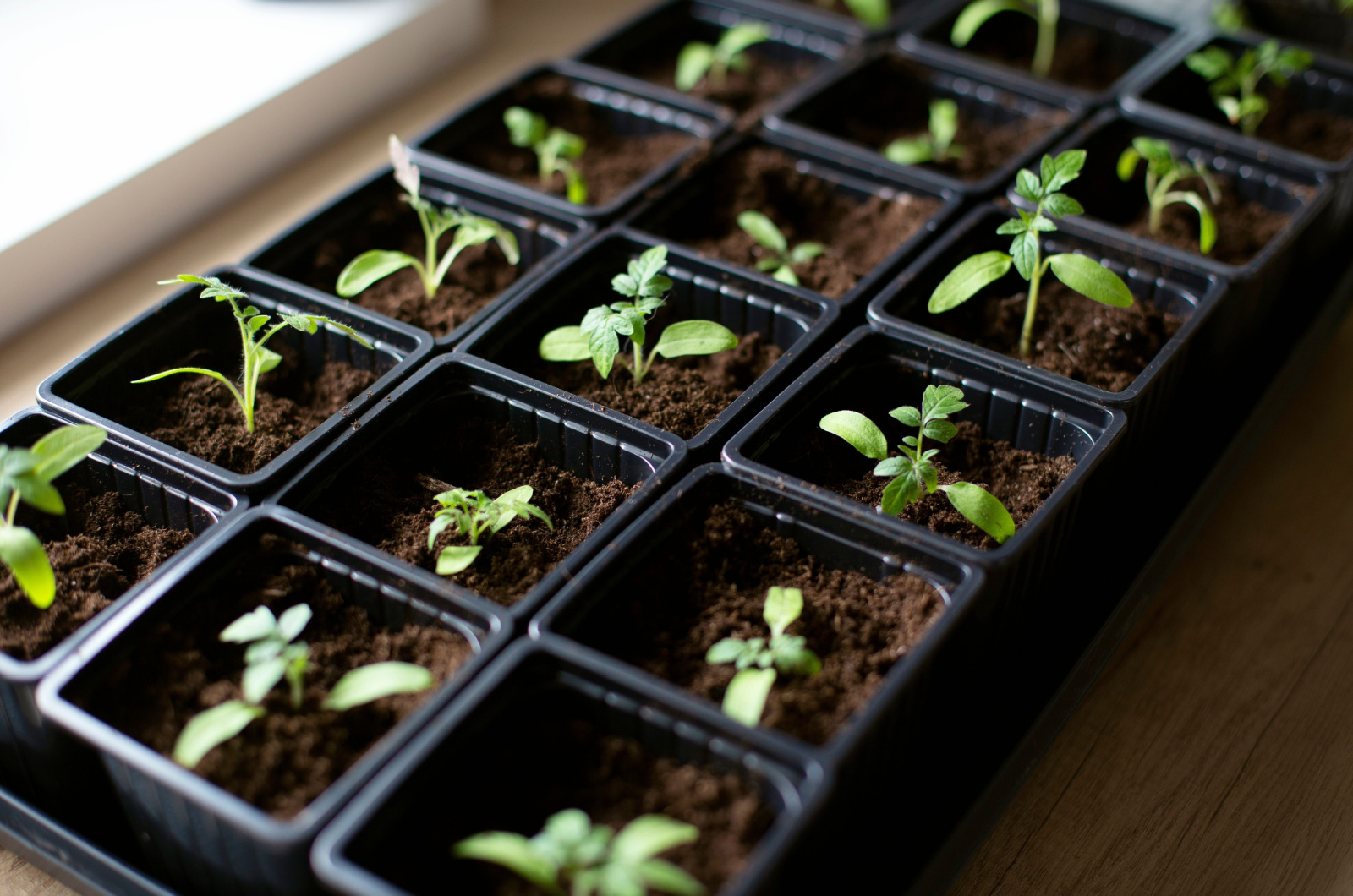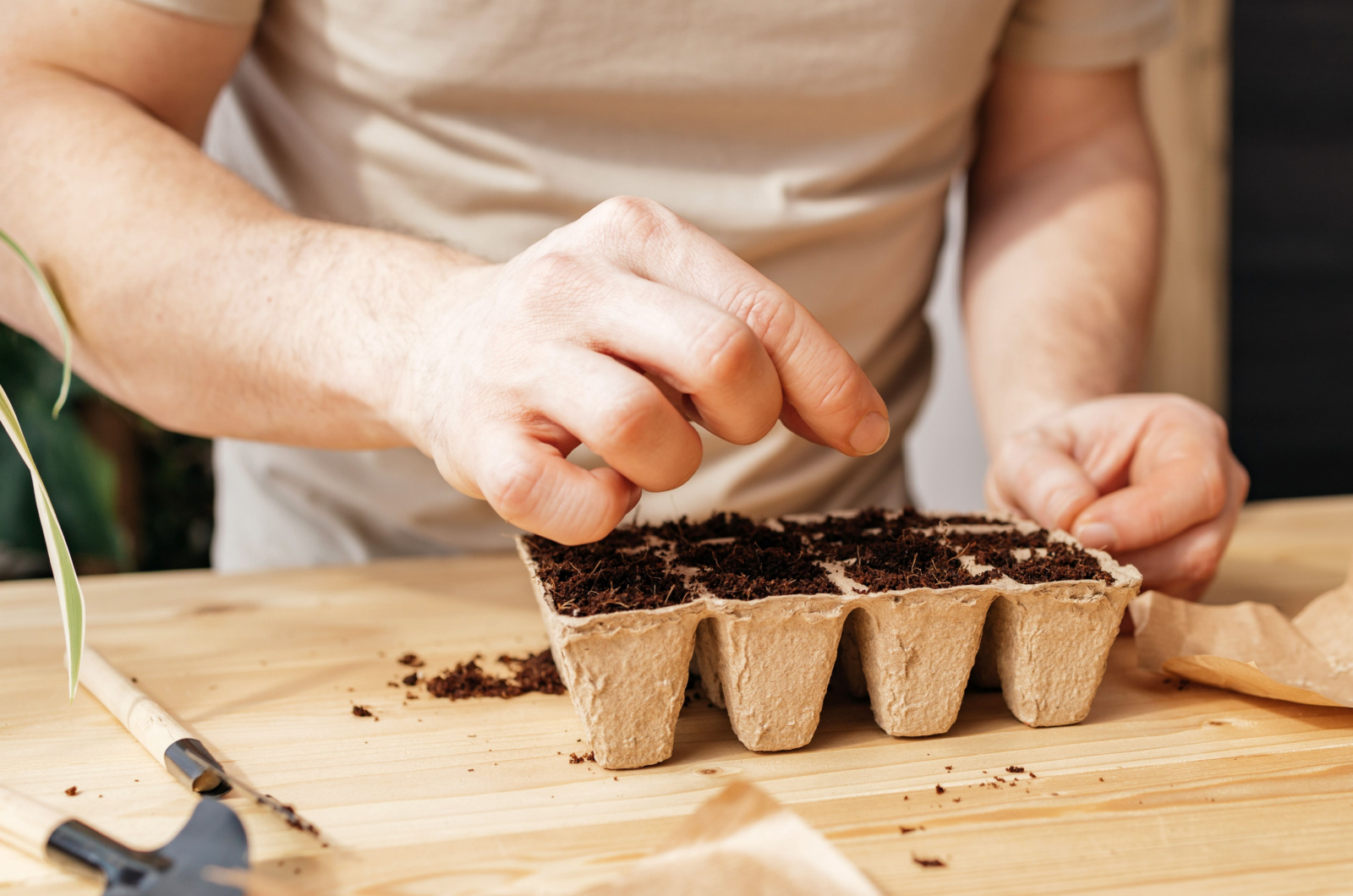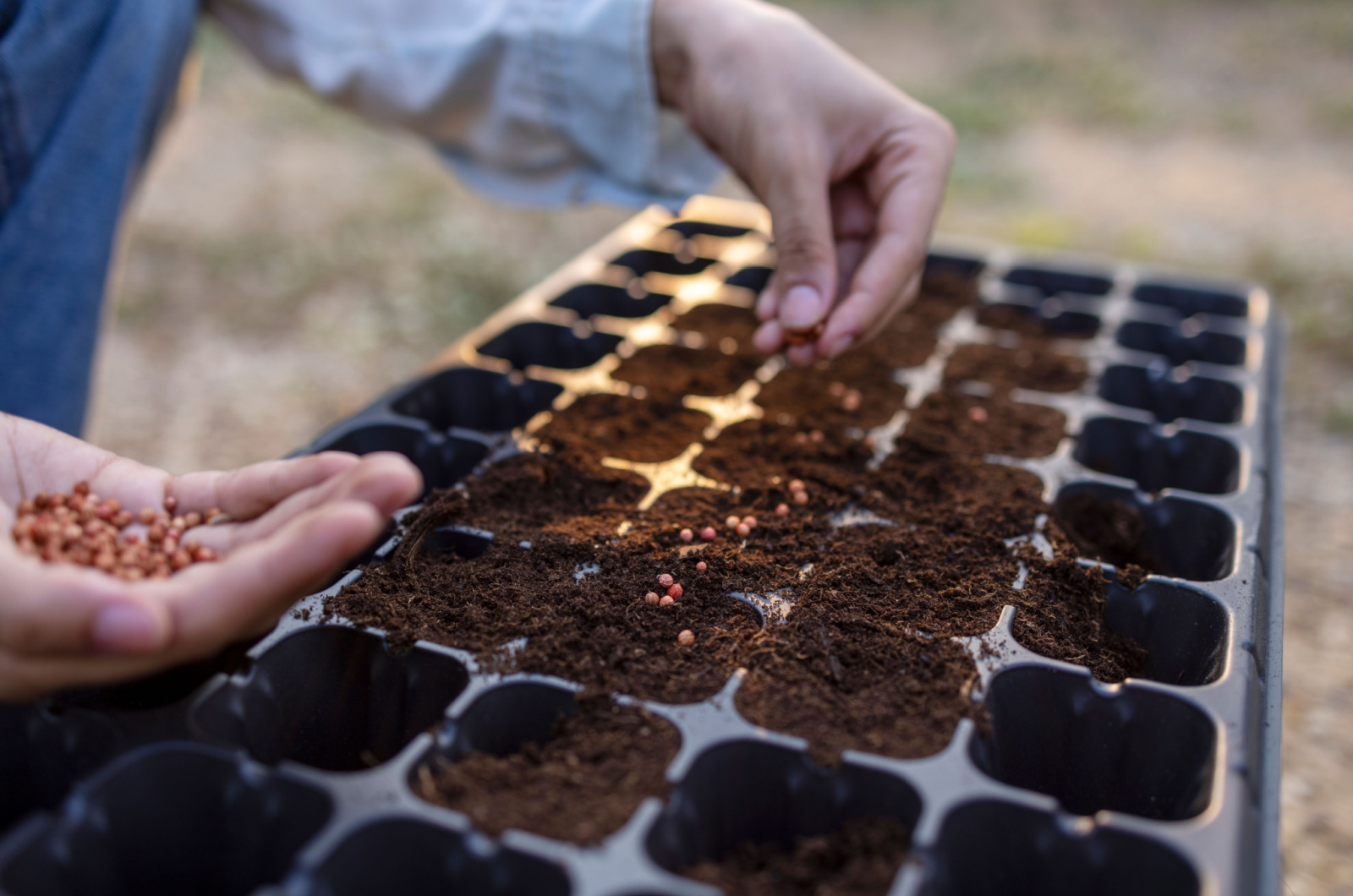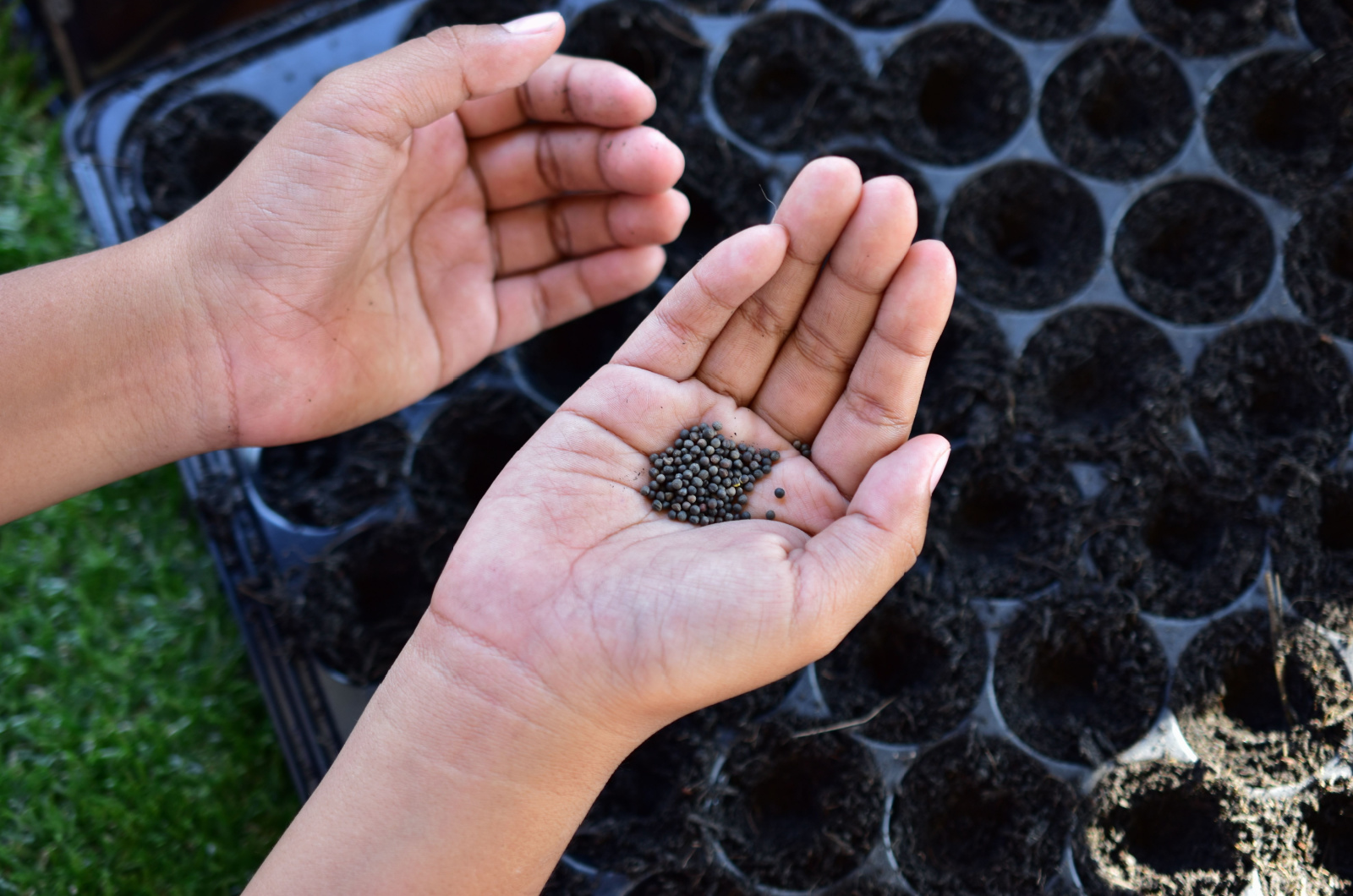The current trends in gardening offer us many different ways of starting plants, but you have to admit that some look too complicated, especially to beginners.
This is a common thought about starting seeds in cell trays, and this way of cultivation is typically related to professional growers. Seed cells definitely deserve more attention from gardeners as it isn’t as hard as it seems.
In this article, I’ll show you how to sow seeds in cell trays and give a head start to your precious plants.
Let’s get started!
More About Seed Cells
When compared to starter pots, seed cells are smaller in size and you’ll mainly find them sold as plastic trays. Some trays can have 4 cells while other types can feature 128 sections.
Of course, the larger cell trays are reserved for professionals whereas the 4-cell trays are perfect for beginners.
You can start many plants this way and, since they all germinate and grow at different rates, you can adjust growing conditions for each.
Why Use Seed Cells?
This gardening technique has many advantages, and one of the best ones is saving space. You can grow more plants and moving them is simpler due to the size and weight of the cell trays.
When transplanting the seedlings, you won’t need to put in a lot of effort and you can finish the task faster. They’re also easy to use and last a long time, which is super beneficial for gardeners.
When To Sow The Seeds In Cell Trays
Timing plays an important role when it comes to sowing seeds in cell trays. Succession sowing is a term we use for planting seeds at different intervals in order to get a continuous harvest.
When using smaller trays, such as those with 16 cells, you’ll get more manageable batches and it’s easier to achieve a continuous harvest of crops.
It’s also important to correctly select the seeds because some plant species do not respond well to transplantation and they don’t like to be disturbed.
In this case, you should opt for biodegradable trays because you can plant them directly in the garden without disturbing the roots. If these trays aren’t available in your area, you can always plant your seeds directly in the ground.
Types Of Seed Cells And Ways Of Using Them
Here are some common types of seed cells and tips and tricks on using them correctly.
Biodegradable Cells
As you can assume, these cells are eco-friendly and they’re made of either cardboard or peat. The main benefit of these cells is that they can be planted directly in the soil when the seedlings are large enough.
Additionally, you avoid damaging the roots of the seedlings and they’re less likely to go through transplant shock.
Of course, you’ll need a larger tray to help you move these cells and make watering easier.
Bear in mind that these are single-use trays, so you’ll need to invest in new ones the next season.
If you use peat cells, remember that this isn’t a renewable material. You can always reuse eggshells or similar materials if you’re concerned about the impact of peat cells.
Soil Blocks
These cells are an excellent choice for growers who aren’t into trays at all. They work the same as the abovementioned biodegradable cells but, this time, replenishment isn’t involved.
A soil blocker and a suitable soil-blocking mix are the only things you need. These blockers may be expensive but think of it as a good investment because they’re reusable.
First, make your seed-blocking mix, making sure it’s solid but there is some moisture after you squeeze it.
After you put the seeds, you should carefully cover them with more mix or vermiculite.
You should know that these blocks lose water faster than the standard pots, so take your time until you create an ideal watering schedule.
Plastic Cell Flats
Last but not least, you can start the seeds in plastic cell flats. The main advantage of these cell trays is that they last a long time and you can choose the ones with up to 200 cells.
I recommend choosing the smaller and BPA-free plastic flats because not only are they durable, but they are also easy to clean and store.
The sowing process is really simple: add potting mix to the cells and put in the seeds. Check on them regularly and transplant when the seedlings grow.
Basic Seed-starting Supplies
You will most likely need a tray if you decide on soil blocks, but they can also help you with other methods regarding irrigation and transplantation.
Artificial lights, heating mats, and humidity domes are other things you should consider investing in if you decide to sow the seeds in cell trays. They’ll ensure warmth, light, and the right humidity level necessary for successful germination.
Additionally, add a widger to your to-buy list for easier transplantation.
What Are The Best Seeds For Seed Cells?
It can be difficult to choose the plants you want to start, but you should know that some seeds will perform better than others.
Here’s a list of seeds that are perfect for cell trays.
• Onions: Before purchasing onions, pay attention to the USDA zone and if the variety is suitable for cultivation in your region. These veggies perform well when started in cell trays, but make sure you separate the seeds upon planting.
• Tomatoes: These delicious vegetables are a great choice for 16-cell trays and will reward you with an abundance of crops.
• Herbs: These species have smaller seeds and they do well when started in cell trays.
• Brassicas: You can choose between many Brassica plants but I recommend cabbage such as Caraflex, which is a smaller variety that matures pretty quickly.
• Peppers: These are other veggies that will perform well if started in cell trays, but don’t forget to select larger cells for the healthiest development.
• Lettuce: If you like lettuce, you can choose smaller varieties such as Little Gem, sow the seeds in smaller cells, and transplant when the first set of leaves occurs.

